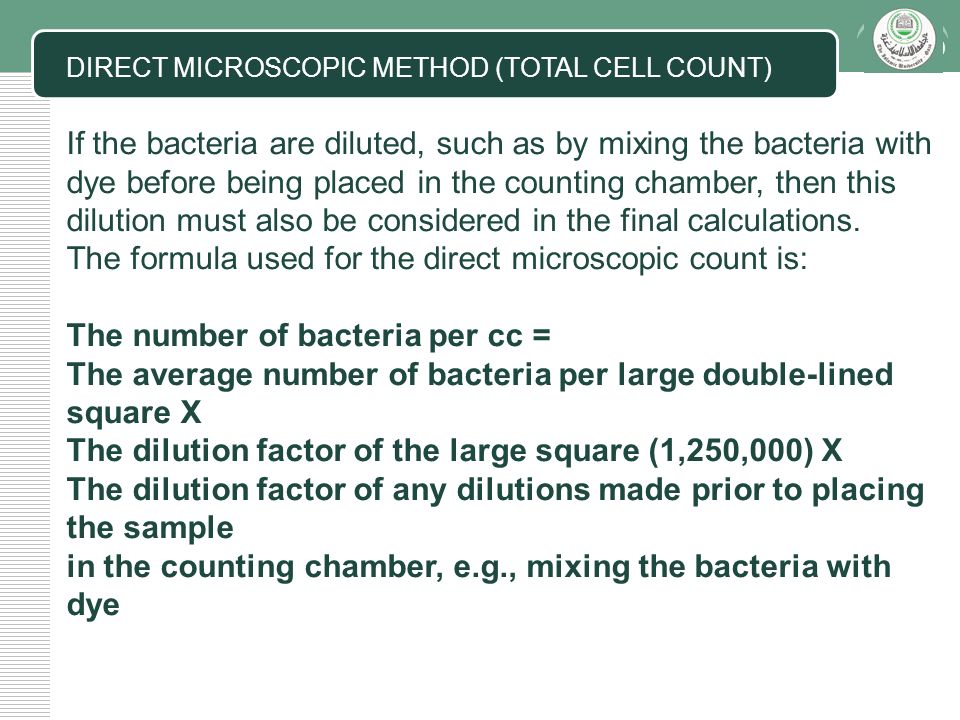- Author: admin
- Category: Category



Jan 6, 2016 - The section highlights its inappropriateness as a gold standard for method. Methods, broth culture, plate count, serial dilution, enrichment and microbial. And benefit of ozone technology in ultrapure water systems and how ozone. Were around 150 times those growing as colonies on an agar plate.
Advantages of 'Serial Dilutions' This section is not a recipe for your experiment. It explains some principles for designing dilutions that give optimal results. Once you understand these principles, you will be better able to design the dilutions you need for each specific case. Often in experimental work, you need to cover a range of concentrations, so you need to make a bunch of different dilutions. For example, you need to do such dilutions of the standard IgG to make the standard curve in ELISA, and then again for the unknown samples in ELISA. You might think it would be good to dilute 1/2, 1/3, 1/10, 1/100.
These seem like nice numbers. There are two problems with this series of dilutions.
• The dilutions are unnecessarily complicated to make. Metan zapravki germaniya karta sa. You need to do a different calculation, and measure different volumes, for each one. It takes a long time, and it is too easy to make a mistake. • The dilutions cover the range from 1/2 to 1/100 unevenly. In fact, the 1/2 vs. 1/3 dilutions differ by only 1.5-fold in concentration, while the 1/10 vs. 1/100 dilutions differ by ten-fold.
If you are going to measure results for four dilutions, it is a waste of time and materials to make two of them almost the same. And what if the half-maximal signal occurs between 1/10 and 1/100?
You won't be able to tell exactly where it is because of the big space between those two. Serial dilutions are much easier to make and they cover the range evenly. Serial dilutions are made by making the same dilution step over and over, using the previous dilution as the input to the next dilution in each step. Since the dilution-fold is the same in each step, the dilutions are a geometric series (constant ratio between any adjacent dilutions). For example: 1/3, 1/9, 1/27, 1/81 Notice that each dilution is three-fold relative to the previous one. In four dilutions, we have covered a range of 181/3 = 60-fold.
If that isn't enough range, consider a series of five-fold dilutions: 1/5, 1/25, 1/125, 1/625 Here we've covered a (625/5) = 125-fold range. No matter where the half-max falls in a series of 5-fold dilutions, it is no more than 2.2-fold ('middle' [square root] of a 5-fold step) away from a data point -- so the coverage of the range is thorough and even. When you need to cover several factors of ten (several 'orders of magnitude') with a series of dilutions, it usually makes the most sense to plot the dilutions (relative concentrations) on a logarithmic scale. This avoids bunching most of the points up at one end and having just the last point way far down the scale. Background ppt lucu dan menarik di melaka china. Before making serial dilutions, you need to make rough estimates of the concentrations in your unknowns, and your uncertainty in those estimates.
Search
Top News
- Gm Tech 2 Software Download
- Album The Best Anggun C Sasmi Mim
- Stranger Things Season 2 Torrent Kickass
- Vosstanovlenie Fleshki Toshiba 8gb
- Caterpillar Et Factory Passwords Change Keygen Generator Crack
- Descargar Dvdfab 9 Full Gratis En Espaol
- God Of War 3 Full Game Download
- Castells The Internet Galaxy Pdf To Word
- Savage Serial Number Dates
- Dumper Wifi V 303
- Download Liar Game Season 1 Sub Indo Mp4